
Last weekend, one of Portland’s most ambitious planning projects got a big boost. With the Earl Blumenauer Bridge now open as a new carfree path across I-84, the Green Loop plan to connect a six-mile linear pathway through all four quadrants in Portland’s central city has closed a critical gap and the vision is more cohesive than ever.
With the opening of the new bridge, it’s finally possible to travel around the entire Green Loop path without stepping out of its central city boundaries. After the dedication ceremonies for the bridge on Sunday afternoon, I accompanied Keith Jones, executive director of Friends of the Green Loop, on a six-mile ride on streets, paths and bridges that he and other loop boosters say will form the backbone of the route.
The Green Loop project is a conceptual idea for a ring around Portland’s city center described in the Portland Bureau of Transportation’s Central City 2035 plan. Its implementation plan describes the loop as a “destination or activity in and of itself” with a “unique combination of leafy green canopy, urban pedestrian plazas, comfortable mobility zones and engaged adjacent development.” It’s one part active transportation path, one part relaxed hangout space, one part opportunity for central city businesses.

“I can see how the Green Loop will connect the dots between active pedestrian traffic and Portland’s small businesses.”
– Dan Ryan, Portland City Commissioner
“It will be our ‘Urban Promenade,’ promoting walking, jogging, biking and connecting people to light rail and streetcar as ways to get to hard-to-reach places. It will be an amenity that draws people from around the region to a different kind of recreational destination, an urban trek through the city — safe, green, active, vibrant and fun for all ages and abilities,” the plan reads.
This plan has been in the works for some time, but projects of this magnitude can’t all come together at once. However, the puzzle pieces that will make up the Green Loop have been connecting throughout the last several years: the carfree Tilikum Crossing is already in place as the loop’s southern connector across the Willamette River, and the route can utilize existing bike paths in South Waterfront, which may serve as the template for paths throughout the rest of the loop.
The Cart Blocks plaza opened on the Green Loop route along the North Park Blocks downtown last year as the first step in the planned downtown “culinary corridor” of food carts and farmers markets. Green Loop boosters think this foodie row can one day be as successful as the beloved Alder Street Food Cart Pod displaced by Ritz-Carlton construction in 2019.
On Sunday, Jones described the Green Loop to me as a “connected path of community spaces that goes around the city,” but also pointed out that these community spaces need support in the form of physical infrastructure in order for the project to come to life. The streets that make up the route will need a major renovation so people walking, biking and rolling can be prioritized over people driving cars.

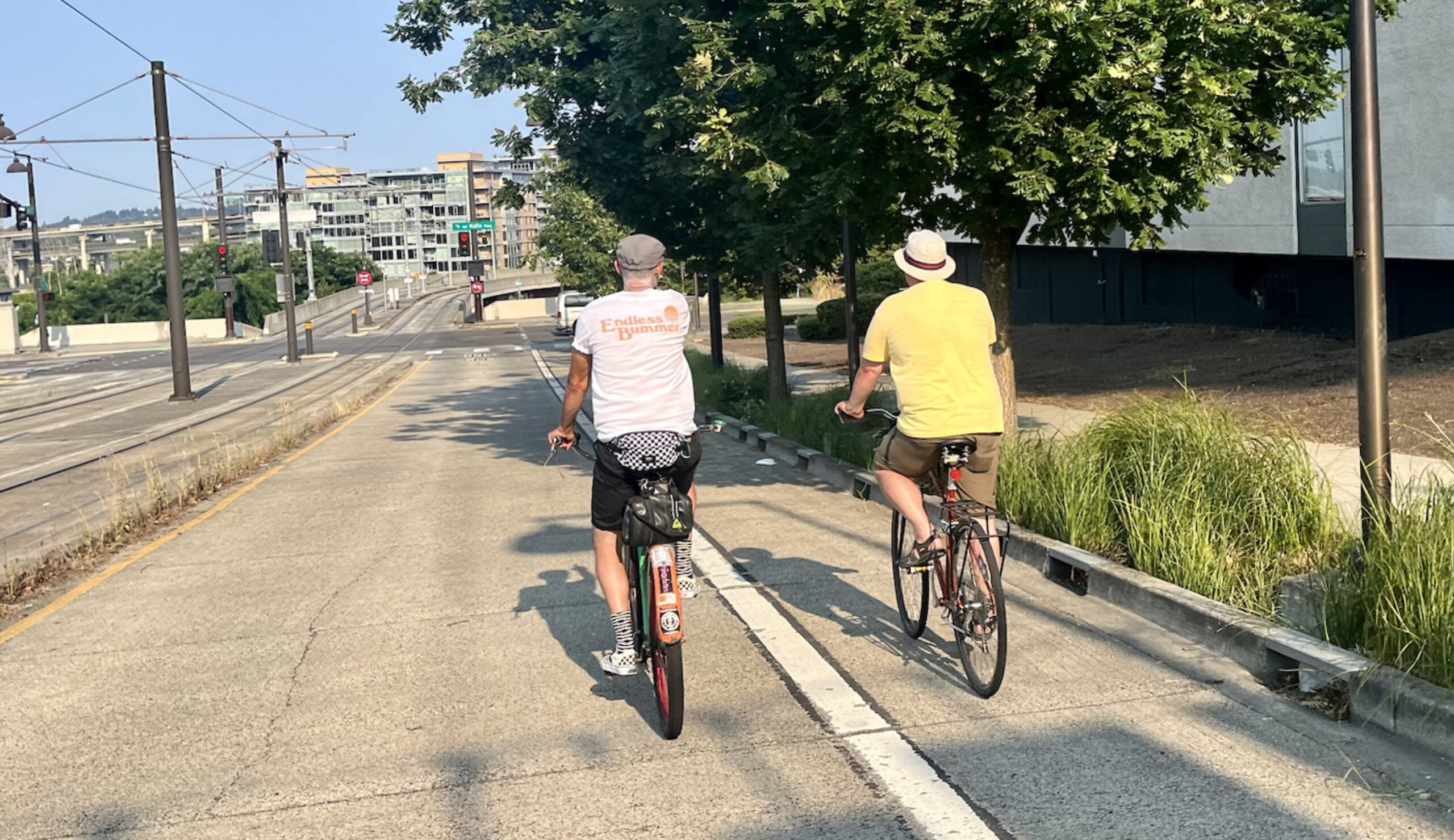
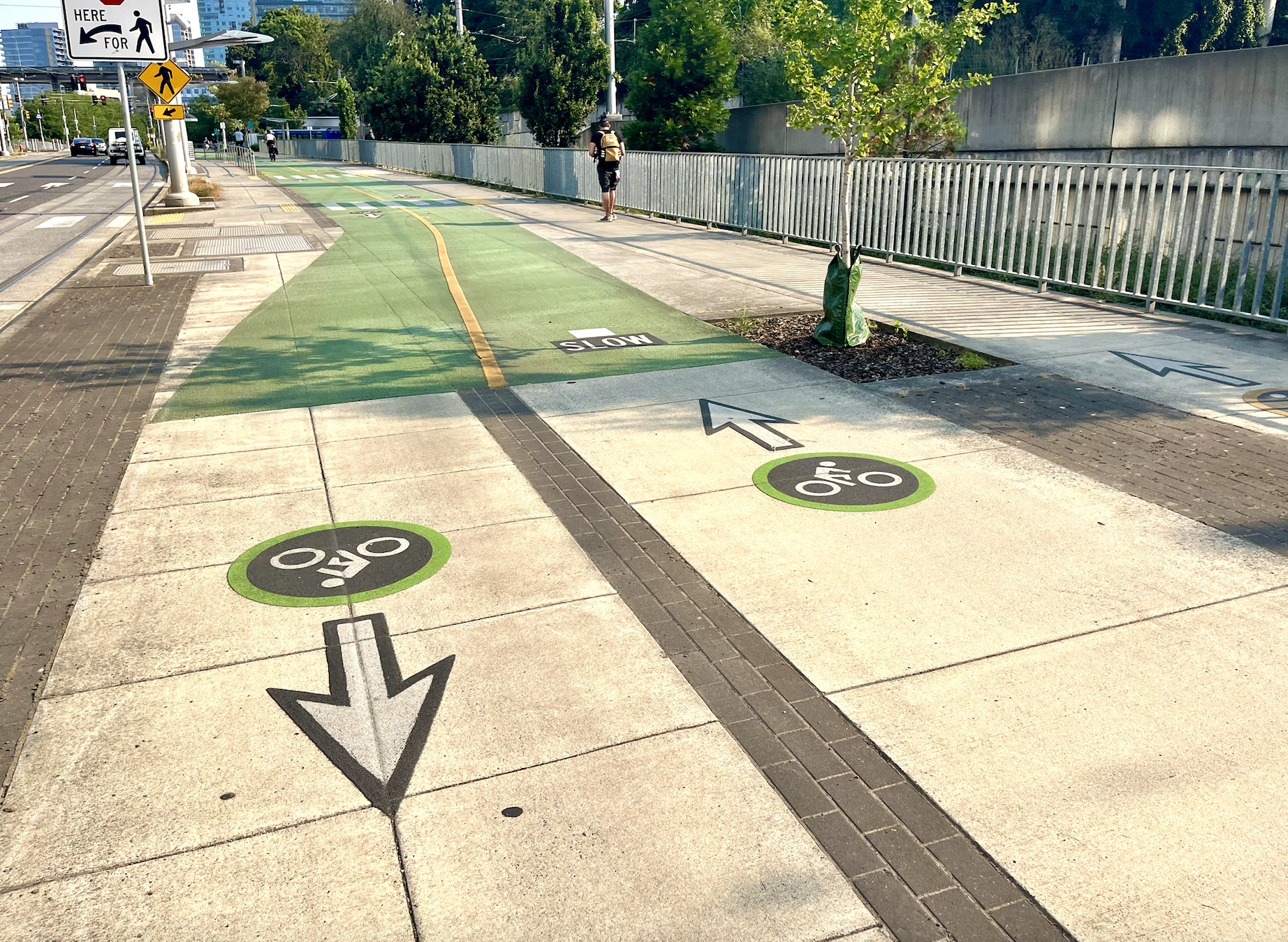
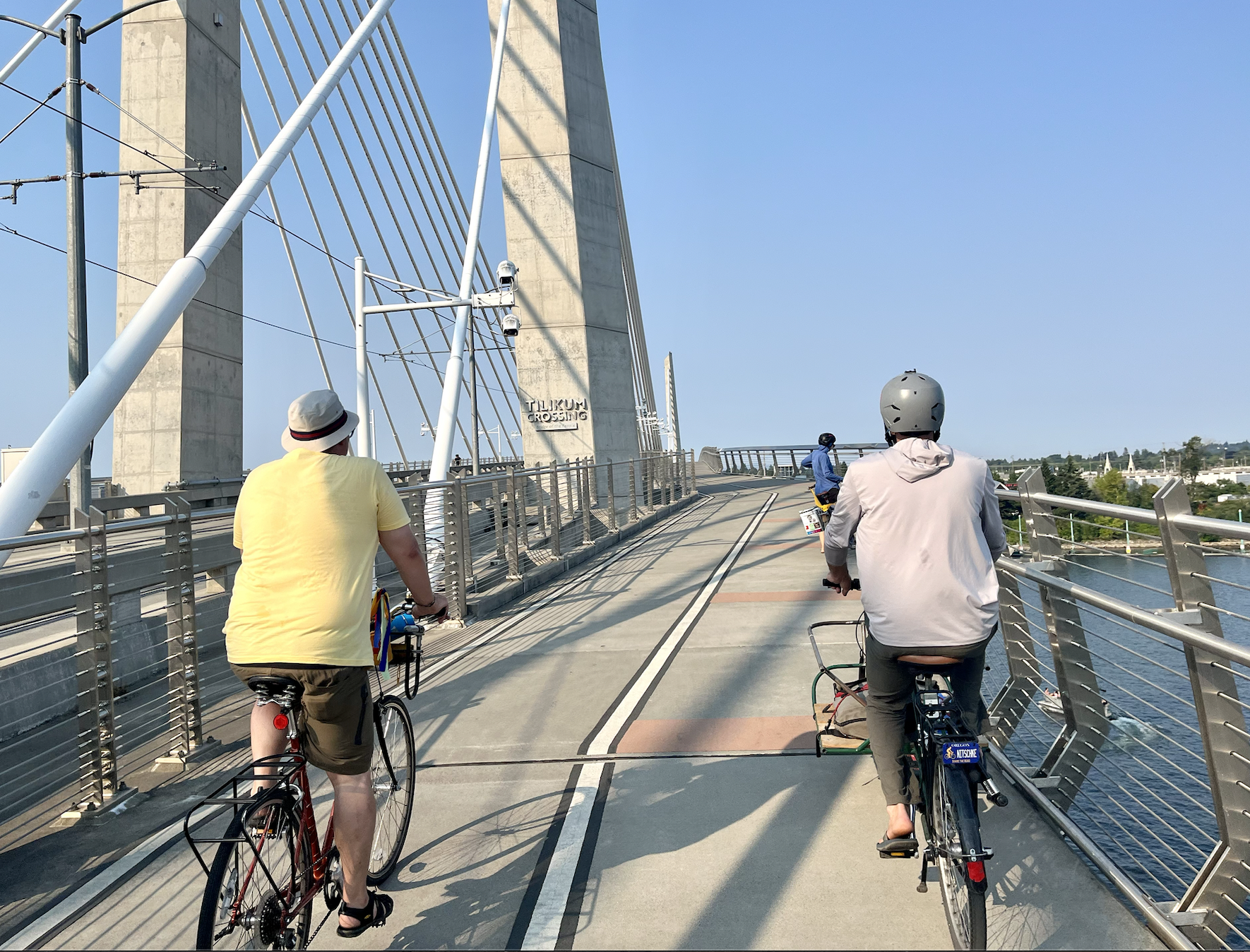
Jones led a small group of riders who were up for braving Sunday’s sweltering heat to check out the bones of the loop. We started north of the new Blumenauer Bridge, heading west on NE Broadway to cross the Broadway Bridge, which forms the north tip of the loop across the Willamette. Jones doesn’t want the Green Loop to utilize the Broadway/Weidler couplet, which has only thin, unprotected bike lanes, to get from the Lloyd District to the Rose Quarter. Instead, he’d prefer it utilizes NE Holladay. But the details of this segment aren’t entirely clear, complicated by the proposed I-5 expansion project at the Rose Quarter nearby.
Once we crossed the Broadway Bridge, Jones pointed out the former U.S. Post Office site, which the city has big plans for. Dubbed the Broadway Corridor, this area is set for development over the next two decades, and it will eventually be a key part of the Green Loop. Right now, however, it’s mostly a barren mass of concrete.
After a quick stop at the Cart Blocks which are located south of W Burnside St between Park and 8th Avenues, we rode south down SW 9th/Park Ave through downtown and the South Park Blocks, making our way toward the Tilikum Crossing to head into the central eastside.
In contrast to the leafy canopy along the Park Blocks downtown, the central eastside has very few carfree plazas or green spaces whatsoever. The Green Loop will utilize 6th Ave as its main corridor on the east side, and there’s a lot that needs to be done there to make it a nice space. Where some might see industrial desolation, however, Jones and the Green Loop advocates see potential.
Kate Merrill, who’s on the Friends of the Green Loop Board of Advisors, pointed out the value of adding green space to the pavement-heavy central eastside, which the Green Loop would help accomplish.
“It’s more important than ever to add green to many areas in the urban core that are currently heat islands, including many routes through the central eastside, as climate change becomes more severe,” Merrill said.
Jones says the central eastside is where business owners are most enthusiastic about the Green Loop, which would go hand-in-hand with development plans for the Oregon Museum of Science and Industry property to transform the neighborhood.
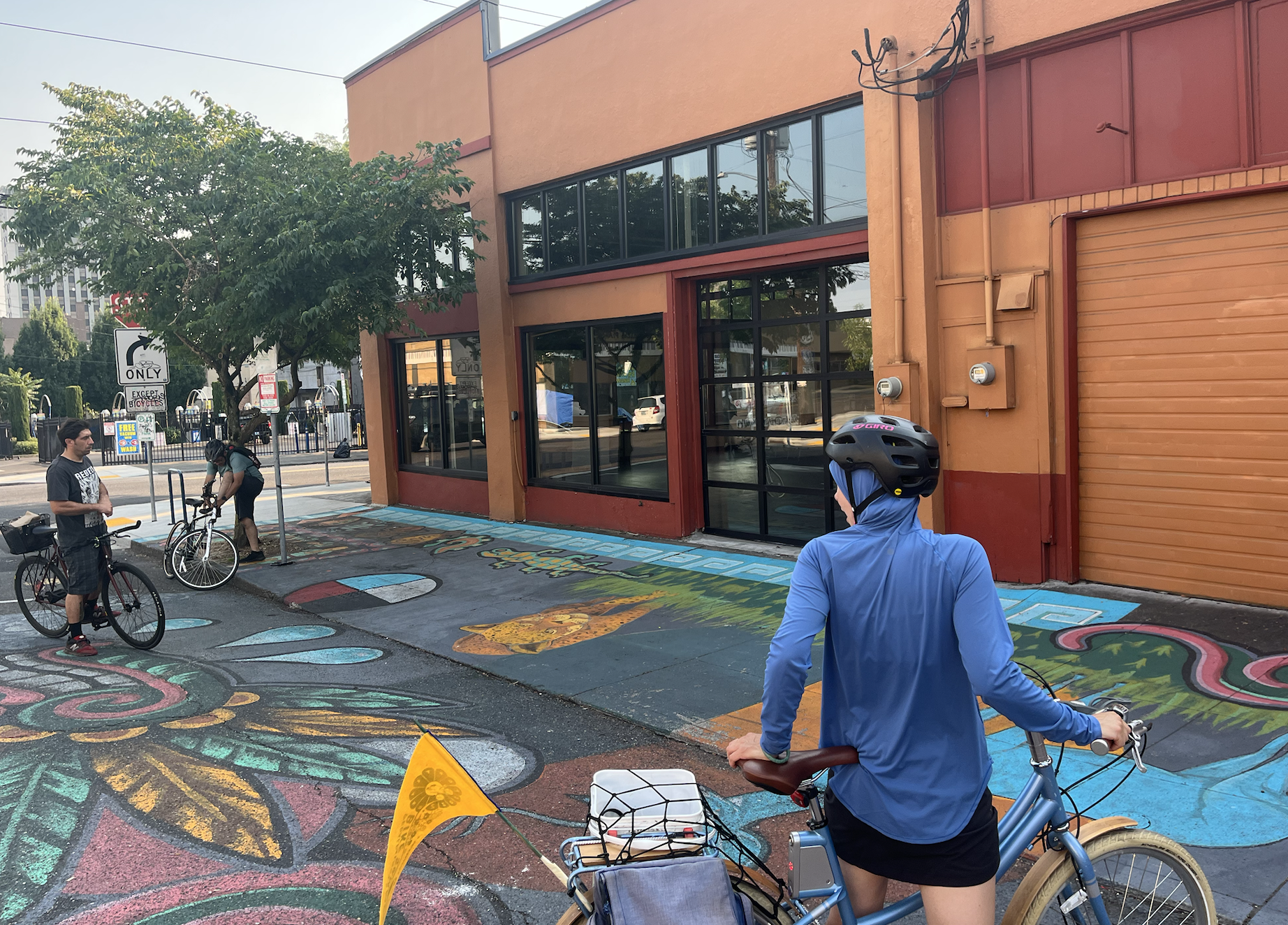

Jones initially worried that the Green Loop wouldn’t get the attention it deserves at the Blumenauer Bridge celebration. But he was pleasantly surprised at the exposure it received: Commissioner Jo Ann Hardesty was wearing a Green Loop t-shirt during her speech and Congressman Earl Blumenauer gave it a shout out as well. Jones also led Portland City commissioners Mingus Mapps and Dan Ryan (and staff from Carmen Rubio’s office) on a tour of the Green Loop in the central eastside, where they spoke with business owners who are excited about the the project. Jones said he wanted to demonstrate to city staff the “people aspect” of the loop. And he seems to have earned another important fan.
“I can see how the Green Loop will connect the dots between active pedestrian traffic and Portland’s small businesses,” Commissioner Ryan commented on Facebook after the ride.
For those who are now Green Loop curious, you won’t have to wait too long for more updates. Jones says a “Green Loop Landing” plaza will debut at the south end of the Blumenauer Bridge this month – more details on that to come. And urban re-greening group Depave is tackling a project to reinvigorate a stretch of pavement on SE 7th Ave between Stark St and Sandy Blvd, which would also be in the Green Loop’s line of sight.
For now, it was impactful to imagine what such a project could do for Portland. It’s clear there are whet appetites for bold plans here. Why not think big?


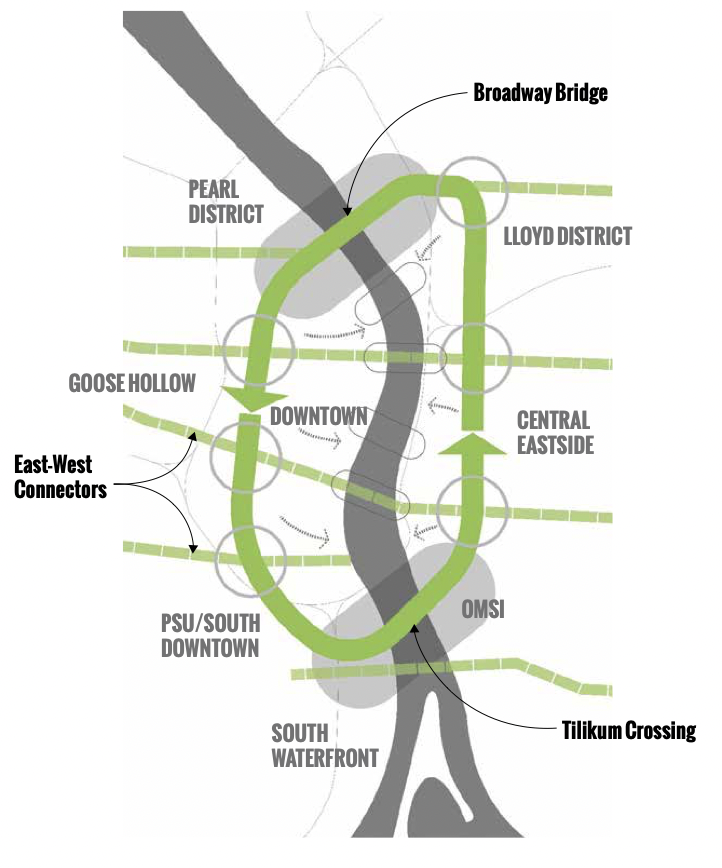
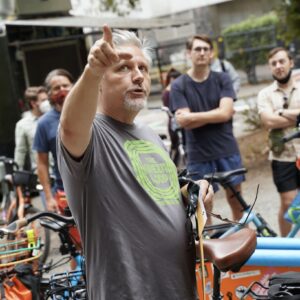
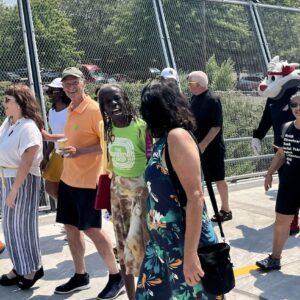
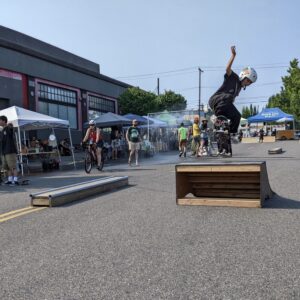

Thanks for reading.
BikePortland has served this community with independent community journalism since 2005. We rely on subscriptions from readers like you to survive. Your financial support is vital in keeping this valuable resource alive and well.
Please subscribe today to strengthen and expand our work.
I feel like 7th should be utilized on the se side instead of 6th. 7th feels unnecessary with Grand and MLK nearby. It’s a huge street that could be completely converted with green space islands running down the center to provide canopy cover, a bus priority lane, and protected bike lanes.
Just get rid of all that space that is currently dedicated to vehicle storage, and the sky is the limit.
I agree that seventh is better than sixth on the east side. If there were more street facing, pedestrian scale businesses to activate on sixth, I’d feel differently. But there’s just more happening on seventh. It’s the route that I would take even if sixth becomes the designated green loop route.
Definitely. If the city is going to such great lengths with things like the EB Bridge, Tilikum bridge, that great looking broadway space design, and so on, why hide the SE segment of the loop on 6th?
I disagree about 7th. 6th has about as many destination on it and it connects better to Grand/MLK and 7th. 6th avoids the dangerous Sandy intersection. ^th could be converted to one way, one loading/ parking lane and convert the other half of the street to bikes and green space. Alternate the direction of travel aevery 3-5 blocks and you you have a super quiet, safe space for biking and business access is maintained. The grades on 6th are also better.
7th has the advantage of existing signals, which is huge, but it is a really fast street. Removing parking would create a useful amount of space for bikes, but it would also increase driving speed. With turning conflicts avery 200-feet, I think the slower street is better for the Green Loop
I think previous commenters were thinking of having 7th be car free. There is no reason to have another arterial right next to something like MLK thats 3 lanes in each direction. The much larger ROW on 7th compared to 6th could make it into something worthy of being part of the green loop and not some backalley in the industrial district. Of course there is auto-centric businesses such as gas stations on 7th that would get all pissy with a plan like this though which I imagine why they choose 6th.
Personally, I wasn’t envisioning seventh as being car free. Rather, I was thinking about dedicated, physically curb separated space for biking and walking and reduced space for motor vehicles.
If you use sixth as your green loop alignment, you’ll need to add new traffic signals at half a dozen arterial crossings and add additional diversion to keep cut through traffic off of sixth. If you have two traffic lights, one after the other at sixth and seventh on major arterials like Hawthorne, Belmont, Morrison, and Stark,I imagine there would end up being a lot of aggressive and angry interactions between motorists and cyclists, especially because a pedestrian and cycle priority street would require a long signal phase, which might not sync up with the traffic signals on intersections with seventh.
I think 7th should be car free. We aren’t going to increase rates of biking and walking to the levels we are aiming for by building infrastructure alone. We have to also make it less easy to drive around the inner city. Imagine if 7th was wide, tree lined, pedestrian friendly avenue that went right through central SE. A complete green loop with this included design would be a major destination in the city.
I don’t think Seventh would need to be car-free. It seems to me that by combining the roadway space used for both bike paths and the center turn lane, there’s room to create a wide, protected bike boulevard on the west side of the street from Washington to Division.
Right turns from southbound traffic on Seventh could be a problem, though. Ideally, as many east-west streets as possible between Sixth and Seventh would be closed to thru-traffic. Make them local-access only from Sixth, dead-ending at concrete planters at Seventh.
Another option: make Seventh and Eighth into a couplet from Division to Stark. One wide southbound lane on Seventh, one wide northbound lane on Eighth, parking on both sides. That opens even more room for a well-protected greenway on Seventh. Maybe even put a row of trees between the Green Loop and the cars.
Those are some good ideas, between removing parking, a center turn lane, and a through lane would be a lot of space that could be dedicated for greenery.
removing parking would create enough space for wide, buffered bike lanes, and much of the center median could be converted to a planted median which would be cool. Maybe the curbs could be bumped 12″-18″ for a more generous planting strip and larger trees. That would make a nice leafy street to ride on and safe biking spaces, but the traffic would be unimpeded by people parking and I suspect it would go even faster than it does today. 7th is an important part of the road network that I do no think could reasonably be closed to cars. IMO, closing half of 6th could make a greenway that is more low-stress and akin to the Park Blocks on the west side
I’d like to see 11th or 12th used instead of 6th or 7th. It has lots of destinations, and, south of Hawthorne, still has lots of big trees.
I hope PBOT / Parks can move forward with an demonstration version of the Green Loop in NW/SW relatively soon (similar to the old Better Naito). There aren’t a lot of good options for reaching the Pearl by bike from Downtown, and the North Park Blocks especially could really do with the activation.
The cross sections for the street on the North and South Park Blocks have been decided, so it’s mostly just a matter of removing on-street parking at this point. There are some signals that would be nice to have, but the crossing of Burnside is probably the only one that’s really needed to make the Green Loop work between PSU and the old Post Office. Construction on the Ritz Carlton will wrap up next spring, and will include a special street design on SW 9th between Alder and Washington, that can hopefully serve as a precedent for the other midtown Park Blocks.
I’m sure Sam Oakland would be proud of this great addition, and am sure that Earl B. is justly proud of these bike projects, dating from his days at PSU…….
Taylor, I just posted the photos from my Aug 4 Green Loop walk on my site. I also exchanged messages with Keith Jones. See the note I sent you, Lisa and Jonathan for details.